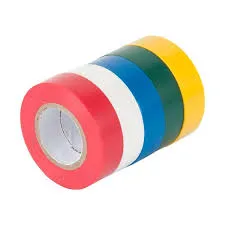Understanding Butyl Rubber Flashing A Comprehensive Overview
Butyl rubber flashing is an essential component in modern construction and roofing applications. Its unique properties make it a preferred choice for sealing and waterproofing various structures, ensuring durability and reliability in different environments. In this article, we will explore what butyl rubber flashing is, its benefits, applications, and installation techniques to better understand why it is a crucial material in the construction industry.
What is Butyl Rubber Flashing?
Butyl rubber is a synthetic rubber that boasts excellent resistance to aging, UV radiation, and weathering. It is particularly known for its low permeability to gases and moisture, making it an exceptional material for sealing and waterproofing. Butyl rubber flashing specifically refers to a sheet or tape made from this material, designed to be applied in various situations where protection against water infiltration is critical.
Benefits of Butyl Rubber Flashing
1. Superior Waterproofing The primary benefit of butyl rubber flashing is its outstanding waterproofing capabilities. It effectively prevents water infiltration, protecting the underlying materials from moisture-related damage, such as mold growth and structural deterioration.
2. Flexibility and Adhesion Butyl rubber flashing exhibits excellent flexibility, allowing it to conform to irregular surfaces and tight corners. Its strong adhesive properties enable it to bond effectively to a variety of substrates—such as metal, wood, and concrete—ensuring a reliable seal that lasts over time.
3. Temperature Resistance This material is resistant to extreme temperatures, both hot and cold. It maintains its performance in a wide range of temperature conditions, making it suitable for diverse climates.
4. Longevity and Durability Butyl rubber is known for its long lifespan, often lasting for decades without significant degradation. This durability reduces the need for frequent repairs or replacements, leading to cost savings in the long run.
5. Chemical Resistance Butyl rubber flashing also showcases resistance to a variety of chemicals, enhancing its applicability in industrial settings where exposure to harsh substances might be a concern.
Applications of Butyl Rubber Flashing
Butyl rubber flashing is used in a variety of applications, notably in
butyl rubber flashing

1. Roofing One of the most common applications of butyl rubber flashing is in roofing systems. It is used around penetrations, seams, and edges to prevent water infiltration. Its flexibility allows it to accommodate the natural movement of roofing materials due to temperature fluctuations.
2. Windows and Doors In the construction of windows and doors, butyl rubber flashing is utilized to create a waterproof barrier that prevents water from entering the building envelope. This is essential for maintaining the structural integrity and energy efficiency of homes and commercial buildings.
3. HVAC Systems Butyl rubber flashing can be used in heating, ventilation, and air conditioning (HVAC) systems to seal joints and ductwork, preventing air leakage and enhancing energy efficiency.
4. Below-Grade Applications It is also effective for below-grade applications, such as basements and foundations, where moisture can penetrate through soil and concrete. Butyl rubber flashing offers a reliable solution to keep these areas dry.
Installation Techniques
Proper installation of butyl rubber flashing is critical to ensuring its effectiveness. Here are some key steps for successful application
1. Surface Preparation Before applying butyl rubber flashing, ensure that the surface is clean, dry, and free from debris. Any oils, dust, or contaminants can affect adhesion.
2. Cutting to Size Measure and cut the flashing material to fit the specific area where it will be applied, allowing for overlaps where necessary.
3. Peel and Stick Application Many butyl rubber flashings come with a peel-and-stick backing. Peel off the protective layer and carefully place the flashing in position, pressing it firmly to ensure good adhesion.
4. Sealing Edges Use additional sealant along the edges or overlaps to further secure the flashing and enhance its waterproofing capabilities.
Conclusion
Butyl rubber flashing is a versatile, durable, and reliable solution for waterproofing and sealing in construction and roofing applications. Its unique properties offer significant advantages in terms of performance and longevity, making it a favored choice among professionals in the field. Understanding its benefits and applications can help builders and contractors make informed choices for their projects, ensuring optimal protection against water infiltration and contributing to the overall durability of structures.
-
XIANGFAN Rubber Tape-Ultimate Solutions for All Your Insulation NeedsNewsJun.24,2025
-
XIANGFAN Rubber Tape-Protection for Industrial and Residential ApplicationsNewsJun.24,2025
-
XIANGFAN Rubber Tape: Superior Safety and Sealing for Demanding EnvironmentsNewsJun.24,2025
-
XIANGFAN Rubber Tape: Reliable Solutions for Every Electrical ChallengeNewsJun.24,2025
-
XIANGFAN Electrical & Industrial Tape: Powering Reliability Across IndustriesNewsJun.24,2025
-
XIANGFAN Electrical & Industrial Tape: Excellence in Every ApplicationNewsJun.24,2025
